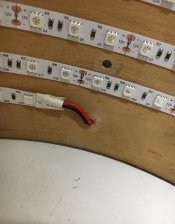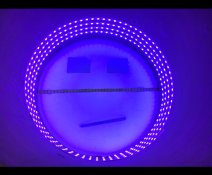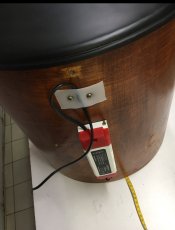Hi everyone,
I’ve made these two yesterday. My first two attempt. The one with the cars came out better though I couldn’t measure the chemicals accurately as I only realised just when I poured the chems in the tray of the scale that it can’t measure only in 1g steps. =)
So I added the chems little by little and when it showed the number I intended to reach I stopped or shoveled a bit back in case I’d added too much. So I could somehow be sure if I measured the right amount or not. When I applied on the aquarell paper it was thick and olive green. I mixed roughly 2,5g Ferric Ammonium Citrate + 10ml water and roughly 1g Potassium Ferricyanide + 10ml water and after mixing them I applied twice so double coated 5 papers, A5 size.
Then I bought a 0.1g scale so I could be accurate. I wanted to waste as little as possible so I divided the amount by five so 0.5g Ferric Ammonium Citrate + 2ml water and 0.2 Potassium Ferricyanide + 2ml water. I saw that this mixture looked way more diluted but I applied the mix anyway and double coated two A5 aquarell paper.
They didn’t look nice at all but I made a test. That is the flower. So I ended up wondering what would be a better ratio. I think I’ll increase the amount in general to be able to coat more paper in one go but still don’t know if I should add more Ferric or Potassium or both and the amount of water.
I’ve read that a good starting point is to measure 25g of Ferric Ammonium Citrate and add water to bring it up to 100 ml. Next, you measure 10g of Potassium Ferricyanide and mix that with water to make up to 100ml.
I appreciate any thoughts on this!


I’ve made these two yesterday. My first two attempt. The one with the cars came out better though I couldn’t measure the chemicals accurately as I only realised just when I poured the chems in the tray of the scale that it can’t measure only in 1g steps. =)
So I added the chems little by little and when it showed the number I intended to reach I stopped or shoveled a bit back in case I’d added too much. So I could somehow be sure if I measured the right amount or not. When I applied on the aquarell paper it was thick and olive green. I mixed roughly 2,5g Ferric Ammonium Citrate + 10ml water and roughly 1g Potassium Ferricyanide + 10ml water and after mixing them I applied twice so double coated 5 papers, A5 size.
Then I bought a 0.1g scale so I could be accurate. I wanted to waste as little as possible so I divided the amount by five so 0.5g Ferric Ammonium Citrate + 2ml water and 0.2 Potassium Ferricyanide + 2ml water. I saw that this mixture looked way more diluted but I applied the mix anyway and double coated two A5 aquarell paper.
They didn’t look nice at all but I made a test. That is the flower. So I ended up wondering what would be a better ratio. I think I’ll increase the amount in general to be able to coat more paper in one go but still don’t know if I should add more Ferric or Potassium or both and the amount of water.
I’ve read that a good starting point is to measure 25g of Ferric Ammonium Citrate and add water to bring it up to 100 ml. Next, you measure 10g of Potassium Ferricyanide and mix that with water to make up to 100ml.
I appreciate any thoughts on this!








 If mold develops, just filter a small amount of the solution through a coffee filter or a paper towel and use the filtered solution.
If mold develops, just filter a small amount of the solution through a coffee filter or a paper towel and use the filtered solution.




